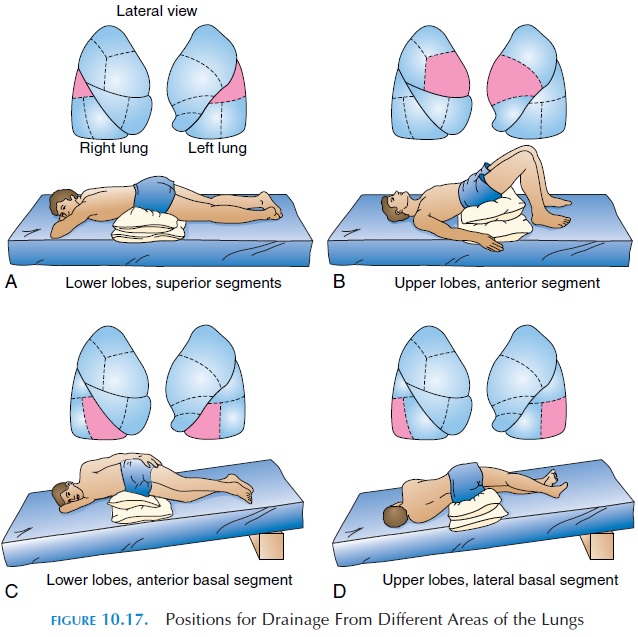Massage should not be painful. If you experience pain during a massage, you should communicate with your therapist.
Massage is intended to provide relaxation and relief, but it should never cause discomfort. Pain during a massage may indicate that the therapist is using too much pressure or is not properly trained. It’s important to speak up and let your therapist know if the pressure is too intense.
Additionally, there are various types of massage techniques, so finding the right one for your needs is crucial. By understanding when massage is painful and communicating with your therapist, you can ensure a positive and beneficial massage experience. Your comfort and well-being during a massage should always be a top priority.
Causes Of Pain During Massage
When getting a massage, the idea is to experience relaxation and relief from tension and stress. However, there are situations when a massage can be painful rather than soothing. Understanding the causes of pain during a massage can help in identifying the root of the issue and finding the appropriate solution.
Pressure Applied
One common cause of pain during a massage is the amount of pressure applied. If the massage therapist uses too much force or works too deeply into the muscle tissue, it can lead to discomfort and pain.
Injury Or Tension
In some cases, pain during a massage may be due to underlying injury or tension in the body. Areas of the body that are already injured or sore may experience increased sensitivity during a massage, leading to pain instead of relief.
Trigger Point Release
Another potential cause of pain during a massage is trigger point release. This technique involves applying intense pressure to specific points in the muscles to alleviate pain and tension. While it can be effective, it may also cause discomfort during the process.
Communicating With Your Massage Therapist
Effective communication with your massage therapist is crucial for ensuring a positive and comfortable experience. If your massage is causing you discomfort, it’s important to communicate openly with your therapist to address the issues and make necessary adjustments.
Expressing Your Discomfort
If you experience any pain or discomfort during your massage, don’t hesitate to speak up. Use clear and direct language to inform your therapist about the areas or techniques that are causing discomfort. This will help them understand your needs and adjust the treatment accordingly.
Providing Feedback
After the session, provide constructive feedback, mentioning specific techniques that caused discomfort. Your therapist will appreciate your honest and detailed feedback, which will aid in customizing your future sessions to better suit your needs.
Requesting Adjustments
If certain movements or pressure levels are causing discomfort, don’t hesitate to request modifications. Your therapist can provide gentler alternatives or modify the pressure to ensure your comfort during the massage.
Techniques To Reduce Pain During Massage
While massage therapy is designed to promote relaxation and reduce tension, some people may experience pain during the session. However, there are several techniques you can employ to minimize discomfort and enhance your overall massage experience. By practicing deep breathing, visualization, mindfulness, staying hydrated, and utilizing heat or cold therapy, you can help alleviate any pain that may arise.
Deep Breathing
Deep breathing is a simple yet effective technique that can help you manage pain during a massage. By taking slow, deep breaths, you bring focus and relaxation to your body. As you inhale, imagine the breath flowing into the areas experiencing discomfort, and as you exhale, visualize the pain leaving your body. Deep breathing not only helps you stay present but also promotes a state of calm and eases any tension you may be feeling.
Visualization
Visualization involves creating mental images that promote relaxation and pain relief. During your massage, close your eyes and picture yourself in a peaceful setting, such as a tranquil beach or a serene garden. Imagine the tension in your muscles melting away and being replaced by a sense of tranquility. By visualizing a peaceful environment, you can enhance the soothing effects of your massage and minimize any pain you may be experiencing.
Mindfulness
Practicing mindfulness involves being fully present and aware of your body and sensations. During your massage, focus on the sensation of the therapist’s hands on your body and the pressure being applied. Pay attention to how the massage is affecting your muscles and any areas of discomfort. By being mindful, you can bring your attention to the present moment and distract yourself from any painful sensations.
Hydration
Staying hydrated before and after your massage can significantly reduce discomfort during the session. Drinking water beforehand helps loosen your muscles and make them more pliable, resulting in easier manipulation and less pain. Additionally, hydrating after your massage helps flush out toxins and supports the body’s natural healing process. Remember, drinking plenty of water is crucial for overall well-being and can contribute to a more pleasant massage experience.
Heat Or Cold Therapy
Heat or cold therapy can be effective in reducing pain and discomfort during a massage. Before your session, consider applying a heating pad or taking a warm bath to relax your muscles and increase blood flow. The warmth helps soothe any tension and aids in muscle relaxation. Alternatively, if you prefer cold therapy, lightly apply an ice pack to areas of discomfort to reduce inflammation and numb any pain. Discuss these options with your massage therapist to determine which approach is best for you.

Credit: www.discovermassage.com.au
Post-massage Discomfort
After a massage, it’s common to experience some level of discomfort or soreness, which can be unsettling if you were seeking relaxation and relief.
Expected Side Effects
1. Soreness: Mild soreness after a massage is normal as your muscles respond to the manipulation.
2. Fatigue: Feeling tired is typical, especially after a deep tissue massage.
Managing Soreness
- Hydrate: Drinking water helps flush out toxins and reduce muscle soreness.
- Rest: Allow your body time to recover and heal post-massage.
- Warm Bath: Soaking in a warm bath can alleviate muscle tenderness.
Seeking Professional Advice
- Communicate: Be open about any discomfort during the massage to prevent excessive soreness.
- Consult: If the pain is severe or persists, consult a massage therapist or healthcare professional.
Preventing Pain In Future Massages
Experiencing pain during a massage can be unsettling, but there are steps you can take to prevent discomfort in future sessions. By following these simple guidelines, you can ensure that your massages are relaxing and beneficial.
Choosing The Right Massage Therapist
When selecting a massage therapist, prioritize those who are certified and have positive reviews. Opt for professionals who specialize in the techniques that best suit your needs.
Communicating Your Needs And Preferences
- Clearly communicate any health conditions or sensitive areas to your therapist.
- Express your preferred pressure, whether it’s gentle or firm.
- Don’t hesitate to provide feedback during the session to ensure your comfort.
Prioritizing Regular Massages
- Schedule regular massage sessions to maintain muscle health.
- Consistent massages can prevent muscle tightness and reduce the likelihood of pain.
- Discuss a customized treatment plan with your therapist for optimal results.

Credit: www.everydayhealth.com

Credit: www.healthline.com
Frequently Asked Questions On When Massage Is Painful
What Does It Mean If A Massage Hurts?
If a massage hurts, it could mean that your muscles are tight or have knots. It’s important to communicate with your massage therapist to adjust the pressure.
Is It Common And Normal To Feel Pain During A Deep Tissue Massage?
It’s common to experience some discomfort during a deep tissue massage due to the targeted pressure on muscles and tissues, but it shouldn’t be intolerable. Communication with the therapist about your pain tolerance is key for a positive experience.
How Do You Deal With Painful Massages?
To deal with painful massages, communicate with the therapist about your discomfort. Take deep breaths and try to relax during the massage. Apply ice to sore areas afterward to reduce inflammation, and consider trying a different massage technique or therapist for a more comfortable experience.
Why Does My Deep Tissue Massage Feel Like Its Burning?
Deep tissue massage might feel like it’s burning due to intense pressure on muscles, leading to increased blood flow and releasing toxins. It’s important to communicate with your therapist to ensure the right level of pressure is applied.
Conclusion
To put it simply, while massage therapy is generally a soothing and relaxing experience, there are times when it can be painful. It is important to communicate openly with your massage therapist, as they can adjust the pressure and technique to suit your preferences and needs.
Remember, discomfort during a massage doesn’t necessarily mean it’s ineffective, but it should never be excruciating. Your well-being is the priority, so don’t hesitate to speak up and ensure a comfortable and beneficial massage experience.



